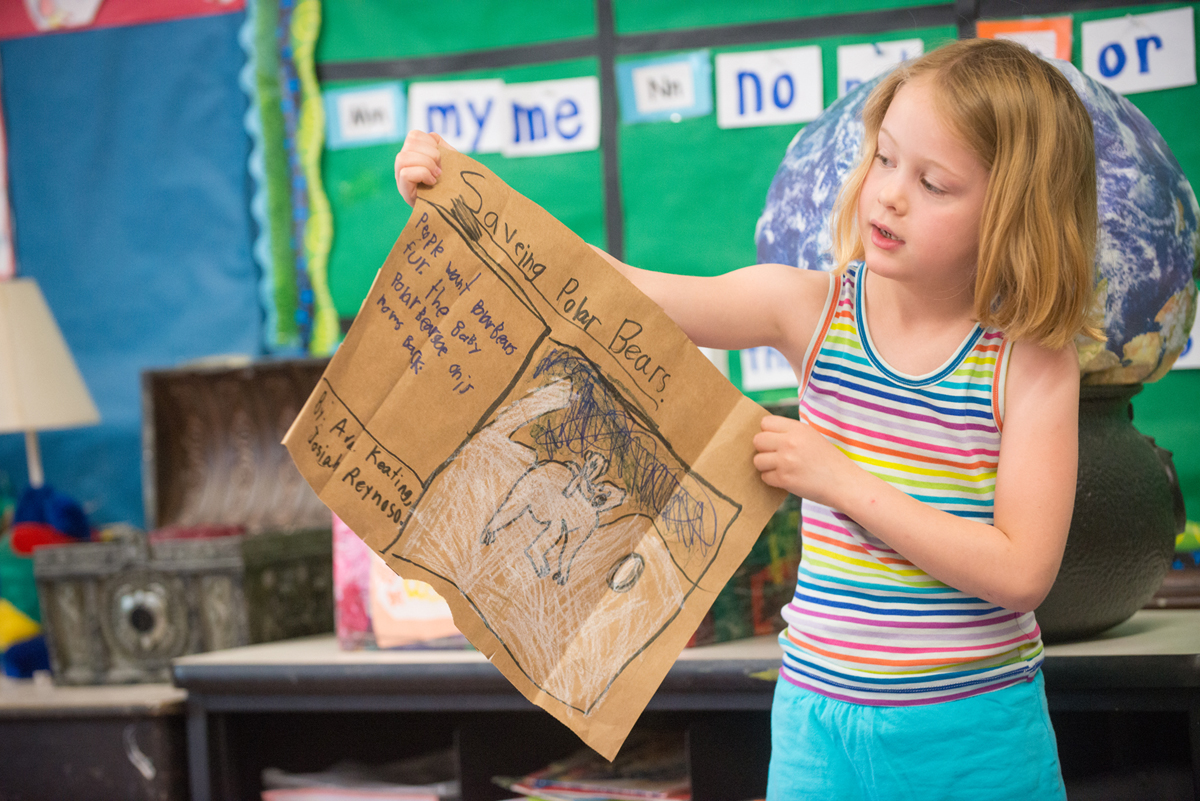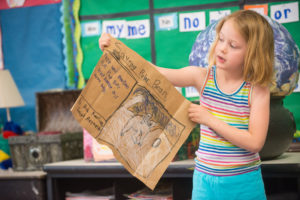Community Service Learning

 Question:
Question:
I’ve heard a lot about community service learning (CSL) and love the idea of combining service to the community with academic learning. I’d like to get a project going in my classroom, but I don’t know how to find a useful project that my students will buy into. Any suggestions?
A: A good way to find community service learning projects is to investigate the websites associated with the National Service-Learning Clearinghouse. Through this website, I and two seventh grade teachers, Lisa Dakin and Sheryl Stanton, discovered a project called, “Let Their Voices Be Heard,” which was created by Patricia Haggerty, a middle school teacher from Massachusetts. This project helps students learn about history by seeing events through the eyes of senior citizens.
Over a six-week period, our students interviewed some of the senior citizens at a nearby nursing home. The goal was to create a book of biographies of the senior citizens. Once the book was completed, the students then presented it to the nursing home as a thank-you gesture. We were grateful that we could be part of the senior citizens’ lives, if only for a brief time.
Although our students were initially intimidated by the idea of interviewing elders, they quickly came to enjoy the project. We found that it wasn’t difficult to find ways to integrate the project into English/language arts, social studies, and technology curricula.
There were many benefits to doing this project. The interviewing promoted good listening and writing skills—the students really looked forward to their quiet writing time. And the students and senior citizens gained new perspectives about each other, with stereotypes being challenged on both sides. The project raised the level of academic rigor and gave the students a renewed sense of community involvement.
Bill Limero is a special education support teacher at Kiley Middle School in Springfield, Massachusetts. Bill has taught for eighteen years and has been involved with CSL for three years. He initiated a biography-writing CSL project at Kiley Middle School that is featured in Kids Taking Action: Community Service Learning, K–8.
A: Ideally, a CSL project arises from a need or a problem that students notice in their community. Keep an ear out for their comments or complaints during recess or out on the playground. When a child laments, “I wish there were more things to do at recess,” you might have a starting point for a CSL project. Discuss with the class how they could solve this problem as a service to the school community. A few years ago my first grade class got involved in a CSL project when one of the children stepped in dog poop on the playground and tracked it into the classroom. When everyone complained about the smell, I realized that playground cleanup would be a great CSL project for these students because it had a direct connection to their lives. And cleaning up the playground served a community that first-graders easily understood—the school.
After discussing the problem with the students, I asked, “Who is responsible for solving this problem?” I told them that they could have a hand in finding a solution. We brainstormed ideas and the project began.
Another approach to finding a project is to initiate a class discussion on what is “community service” and then have the class generate a list of the needs or problems that they see in their community, which may encompass their school, their neighborhood, and/or their town. The class could then vote on the service that they would like to provide.
Jan Demers has taught first grade at Crocker Farm Elementary School in Amherst, Massachusetts, for twenty-five years. Jan is coordinator of CSL for the Amherst elementary schools and her first graders do CSL projects every year. The playground clean-up project mentioned below is featured in Kids Taking Action. Jan uses The Responsive Classroom® approach in her teaching.
A: It is easy to have kids buy into a curriculum that is hands-on. We have a wetlands area behind our school that the students and I refer to as our outdoor classroom. We visit the wetlands monthly. I determine the focus for each visit, but the kids often find something they want to investigate as well.
The wetlands present great opportunities for environmental service projects that easily connect to the curriculum. For example, in the first years that we were studying the wetlands area, the president of the Environmental Trust came to speak to the class and tour the wetlands with us. When she found salamander egg masses in the wetlands, she told us that we had vernal pools. Vernal pools are depressions in the ground that fill with water each spring and support several amphibian and invertebrate species. The students decided to work towards getting a vernal pool certified by the Natural Heritage Program of the Massachusetts Division of Fisheries and Wildlife.
The project spanned three years. Each year a new group of students picked up the task of data gathering: measuring the pool, making graphs and drawings, taking photos of larva and egg masses, filling in observation sheets, keeping records, and writing in their journals. In the third year of the project, students assembled all the data and submitted it to the Natural Heritage program, which approved the application for certification.
Dawn Sather teaches fourth grade at Forrest Park Elementary in Hudson, Massachusetts. She has taught in the Hudson school system for thirty-five years. Dawn has received numerous awards for her work as a science teacher, including the CESI/CIBA Exemplary Science Teacher Award, which was awarded in March 2002. Her work with the wetlands is featured in Kids Taking Action. Dawn has completed Responsive Classroom I and II week-long institutes.
Finding the Time for CSL
Most teachers agree that the rewards of CSL projects are more than worth any extra time invested. Nancy Gallagher, adjustment counselor at Brayton Elementary School in North Adams, Massachusetts, advises teachers to start small. She also recommends finding another teacher who can share the workload. If your school or district has a CSL coordinator, make full use of his/her help. Finally, make sure that the CSL activity is solidly connected to curriculum goals so that it deserves the time you put into it.
—from NEFC’s new book, Kids Taking Action: Community Service Learning Projects, K–8
